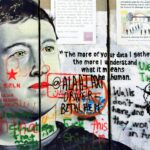Transforming Education for the Future
Many people have claimed the modern education system is broken. Over the years, people have tried to reform it by changing funding, creating new programs, and reforming standardized testing.
No matter how much modern education tries to make changes, many students will continue to struggle. In 2022, average mathematics test scores had its first decline and average reading scores saw the largest decline since 1990, according to the National Assessment of Educational Progress.
Reforming the system is not enough, and there is a dire need for transformation and innovation in learning. Education needs to be tailored to the needs of individual students instead of creating the “average student” or a “collective.”
When schools closed, many parents and educators began noticing problems with their students learning from home. Not only did test scores go down, but children showed a lack of interest in classes.
This led to parents and educators to seek alternatives, such as charter schools, private schools, and even the innovative microschools and learning pods.
In fact, many have started to jump on the innovation in education bandwagon, which started to rise in popularity during the COVID-19 pandemic. One of the goals of innovation in education is to remove stigmas, such as grades and test scores. Many innovative methods focus on mastery rather than exams.
People, including Sal Khan, founder of Khan Academy, was an early adopter of being an education innovator with Khan Lab School back in 2014, long before pandemic. Instead of teaching to tests, the school is focused on mastery-based learning.
In Khan’s most recent TED Talk, he spoke about how artificial intelligence can be used to save education instead of destroying it. This is evident in his comprehensive AI tutor, Khanmigo, which not only identifies students’ mistakes, but it takes note of possible “misconceptions in their understanding and provides effective feedback.”
However, to get to a solution, there has to be a problem.
The modern education system was structured in a way that has stifled diversity of thought and creativity. Modern education is working as it should. It expects different minds to think and work the same way, and it creates the idea of the “average student,” but in reality, all students are different and not one is alike.
The notion of the “average student” was created by intellectual figures such as Adolphe Quetlet and Frederick Taylor. They believed in the idea of the average man, and people should be part of a collective, instead of being individuals.
While Quetelet and Taylor were perfecting their ideas, Horace Mann created the concept of the Common School, As the country became more diverse, “the father of American education” believed it was necessary to create a uniform education system for the purpose of having “political stability and social harmony.”
These ideas were developed during a time when different skillsets were required for employment. Back in the 1950’s the skills highest in demand included being able to work independently for certain time lengths, memory for instructions, and mathematics computation Now, the highest skills in demand are critical thinking, problem solving, and creativity.
It is time for education to catch up and prepare students for our ever-changing society and workforce.
Former Harvard University professor and founder of the think tank Populace, Todd Rose, came to the conclusion there is “no such thing as an average student.” In a video he explained how early in his career he scanned people’s brains, and his team tried averaging those together. They came to the conclusion that the brain scans looked nothing alike.
This proves students have unique ways of learning, thinking, and acquiring knowledge. Even students with the same optimal learning style are different.
It is time to transform education by tailoring learning to the needs of students and preparing them for the future.
Transforming the education system begins with having more options in education, robust school choice policies, and not being afraid of exploring the unknown.




